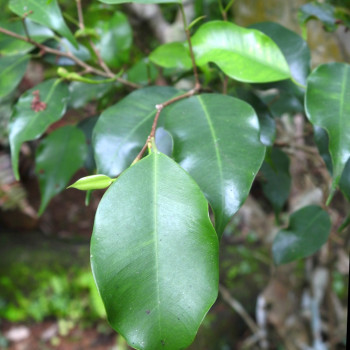Weeping fig

Scientific Name :
Ficus benjamina L.
Synonym(s) :
Ficus nitida Thunb.
Local/Common name(s) :
Vellal, Weeping fig
Family :
Moraceae
Habit :
Tree
Flowering/Fruiting Time :
July-December
Habitat :
Planted as ornamental tree
Endemic :
No
Status (IUCN) :
Least concern (LC)
Distribution :
India and South China to Solomon Islands
Nativity :
Indigenous
Uses :
Ornamental
Description (Morphology) :
Evergreen trees, aerial roots few; bark grey, smooth; latex milky. Leaves simple, alternate, distichous; stipules 10-12 mm long, paired, lateral, lanceolate; petiole 4-25 mm long, stout, glabrous, glandular at apex below; lamina 3-12 x 1.5-6 cm, elliptic or elliptic-ovate, base round, acute or subcordate, apex acute or acuminate, margin entire, glabrous, coriaceous; lateral nerves 6-18 pairs, parallel, prominent, secondary laterals prominent, intercostae reticulate, faint. Inflorescence a syconia, 8-12 x 7-10 mm, axillary, sessile, paired, globose or subobovoid; basal bracts 2-3, minute, ovate; orifice circular, slightly raised, closed by 3 apical bracts; internal bristles absent; flowers unisexual, of 4 kinds; male flowers : abundant, disperse; pedicels 0.8-2 mm; tepals 3; stamen 1, included; anthers oblong; female flowers : sessile, tepals 3-4; ovary 0.7 mm long, ovate, brownish; style 1.5 mm long, tip curved, dilated, stigmatiferous; gall flowers similar to female flowers but pedicellate. Syconium orange, rarely pink or dark purple; achenes smooth.



